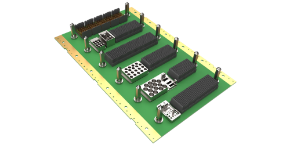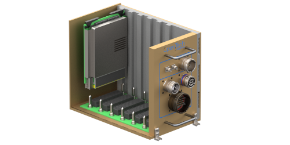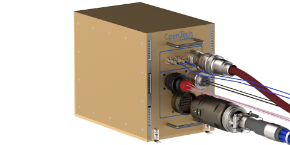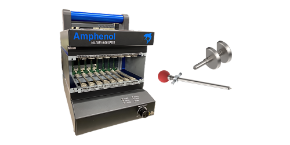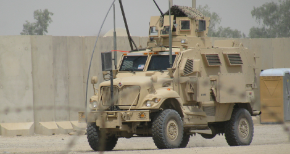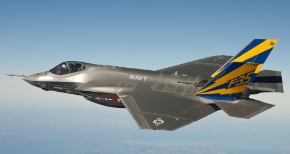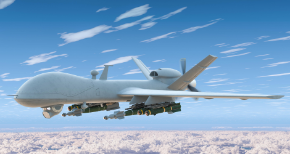About us
Introducing Open.Tech by Amphenol
The ultimate destination of military and defense manufacturers seeking industry-leading Open Architecture products.
At Amphenol, we're passionate about connecting the world with cutting-edge technology. As a global leader in the design and manufacturer of interconnect solutions, we have vast experience in the development of Open Architecture technologies, backed by an active involvement in Open Standards communities such as the The Open Group Sensor Open Systems Architecture™ (SOSA) consortium and the VMEbus International Trade Association (VITA).
By leveraging our expertise and capabilities of multiple Amphenol Military & Aerospace business groups, Open.Tech offers military and defense manufacturers a comprehensive marketplace for Amphenol’s extensive range of Open Architecture from Circuit Board and I/O Connectors, Flex and Rigid Board Solutions, Active Components, CCA’s and Value-Added Capabilities under one umbrella. Our platform simplifies the process, enabling customers to easily find the most suitable solution to meet their assembly needs and achieve their design goals efficiently and cost-effectively.
With the rise of the Modular Open Systems Approach (MOSA), Commercial Off-The-Shelf (COTS) products will define the development and manufacture of future military and aerospace applications for years to come. At Amphenol, we understand these next-generation systems demand high-speed capabilities, unwavering signal integrity, modular arrangements, tighter pitches, and many more strict design considerations. We’ve played an active role in the development and improvement of the open standards we implement throughout our open architecture systems, and our market-leading interconnectivity solutions reflect that in their quality and performance.
Everything open, everything modular, and everything scalable. When designing your next project, Build It At www.Open.Tech.
What is MOSA?
The Modular Open Systems Approach (MOSA) is a strategic framework designed to enhance the flexibility, interoperability, and cost-effectiveness of systems in various industries, particularly in defense and aerospace. Here are the key aspects of MOSA:
- Modularity: MOSA emphasizes the design and development of systems using modular, commercial off-the-shelf (COTS) components. This modularity allows for easier upgrades, modifications, and replacements of individual components without needing to redesign the entire system.
- Open Standards: Central to MOSA is the use of open standards for interfaces, components, and architectures. Open standards ensure that systems and components from different vendors can interoperate seamlessly, reducing vendor lock-in and promoting competition and innovation.
- Interoperability: By adhering to open standards and modular principles, MOSA ensures that different systems and components can work together effectively. This interoperability is crucial for integrating systems from various sources into a cohesive and functional whole.
- Cost-Effectiveness: The use of modular, open systems reduces development and lifecycle costs. It allows for the reuse of existing components and systems, simplifying maintenance and enabling more cost-effective upgrades and enhancements.
- Scalability and Flexibility: MOSA-based systems can be scaled and adapted to meet changing requirements. The modular approach allows for the easy addition of new capabilities or expansion of existing ones without significant redesign.
- Rapid Technology Insertion: MOSA facilitates the quick integration of new technologies into existing systems. This capability is particularly important in defense and aerospace, where technological advancements can provide critical advantages.
- Lifecycle Management: MOSA supports better lifecycle management by making systems easier to maintain, upgrade, and sustain over time. This approach reduces obsolescence risks and ensures that systems can remain effective and relevant for longer periods.
- Collaboration and Innovation: By promoting open standards and modularity, MOSA encourages collaboration among different organizations, including industry, government, and academia. This collaboration fosters innovation and the development of more advanced and effective systems.
MOSA is a strategic initiative widely adopted by defense organizations, including the U.S. Department of Defense (DoD), which mandates the use of MOSA principles in many of its acquisition programs. The goal is to create more agile, adaptable, and cost-effective defense systems that can rapidly respond to evolving threats and technological advancements.
What is VITA?
The VMEbus International Trade Association (VITA) is an organization that develops and promotes open standards for embedded systems, particularly in the fields of aerospace, defense, industrial, and transportation applications. Here are the key aspects of VITA:
- Standards Development: VITA focuses on developing standards for open system architectures used in embedded computing. These standards cover a wide range of technologies including hardware, software, and system integration.
- VMEbus: VITA's initial and perhaps most well-known standard is the VMEbus (Versa Module Europa bus), a computer bus standard widely used in industrial, commercial, and military applications. It is known for its robustness and versatility in various high-reliability and high-performance applications.
- OpenVPX: One of the prominent standards developed by VITA is OpenVPX (VITA 65), which defines system-level VPX interoperability for multi-vendor, multi-module systems. It is used extensively in military and aerospace applications due to its flexibility and performance.
- Ruggedized Systems: VITA standards often focus on ruggedized systems designed to operate in harsh environments. These systems are critical in military, aerospace, and industrial applications where reliability and durability are essential.
- Modular and Scalable Architectures: VITA promotes modular and scalable system architectures, allowing for easier upgrades, customization, and integration of new technologies. This approach aligns with the principles of MOSAand SOSA.
- Member-Driven Organization: VITA is a member-driven organization, with contributions from various industry stakeholders including manufacturers, integrators, and end-users. This collaborative approach ensures that the standards meet the needs of a wide range of applications and industries.
- Certification and Compliance: VITA provides certification and compliance programs to ensure that products meet the established standards. This helps in maintaining interoperability and reliability across different systems and components.
- Innovation and Future Development: VITA continuously works on new standards and updates to existing ones, addressing emerging technologies and industry needs. This ensures that VITA standards remain relevant and useful in the rapidly evolving field of embedded computing.
What is SOSA?
The Sensor Open Systems Architecture (SOSA) technical standard is a standardized framework designed to enable the development of interoperable, modular, and scalable sensor systems. It is primarily used in the defense and aerospace industries to ensure that sensor systems from different manufacturers can work together seamlessly. Here are some key aspects of the SOSA technical standard:
- Modularity: SOSA promotes the development of systems with interchangeable components, allowing for easier upgrades and maintenance. This modularity is achieved through the use of well-defined interfaces and standardized hardware and software modules.
- Interoperability: By adhering to the SOSA specification, different systems and components can interoperate, regardless of the manufacturer. This reduces integration complexity and enhances the ability to combine various sensors and subsystems into a cohesive whole.
- Scalability: The SOSA technical standard is designed to be scalable, enabling the creation of systems that can range from small, simple sensor setups to large, complex networks of sensors.
- Reusability: The use of standard modules and interfaces means that components can be reused across different projects and systems, reducing development time and costs.
- Open Standards: SOSA is based on open standards, which means it is not tied to proprietary technologies. This openness fosters innovation and competition among vendors, leading to better and more cost-effective solutions.
- Focus on Embedded Systems: SOSA is particularly focused on embedded sensor systems, which are critical in defense and aerospace applications.
The SOSA Consortium, which includes industry, government, and academic partners, oversees the development and maintenance of the SOSA specification. This collaborative effort ensures that the specification meets the needs of a broad range of stakeholders and keeps pace with technological advancements.


